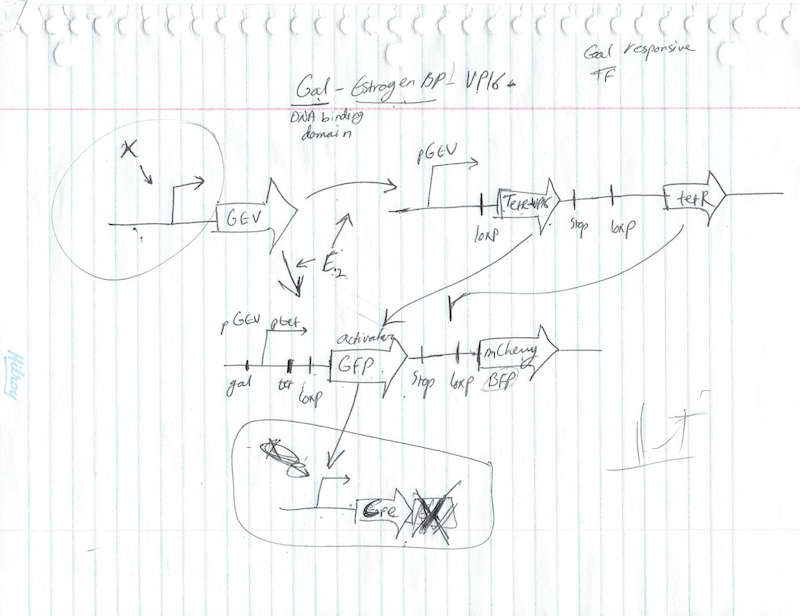Team:uOttawa/notebook
From 2013.igem.org
Notebook
February 2013
Recruitment begins for the uOttawa 2013 iGEM team.
March 2013
March 3rd-10th
The uOttawa iGEM team is formed. Leaders were appointed for each division of the team; wet lab, dry lab, human practices, and design team.
March 17th -24th
Each division of the team brainstorms project ideas. Human practices decide on writing a children’s book in hopes of educating children about synthetic biology. We will administer a test before and after the children read the book, in hopes of collecting significant data. The wet lab decides on building a type-I incoherent feedforward loop; a gene network in which protein X activates a gene Z while simultaneously activating the production of a repressor of gene Z. The use of S. Cerevisae as an organism to work with is confirmed.
April 2013
March 31st-April 7th
Project logistics are discussed. Sponsorship, the website, team logo, and potential use of the type-I IFFL as a toxic molecule detector are examined. The project mock-up is drawn.
April 21st-28th
Human practices brainstorm the cost, design, and plot of the children’s book. Everything is looking great! The design team begins to redesign uOttawa’s logo for this season. Dry lab decides on making a web-app to facilitate the assembly of BioBricks.
May 2013
April 28th-May 5th
Wet lab members begin training. The first PCRs are performed! Work begins looking for inducible promoters. Possible applications of the project include medical diagnostic tool and environmental solution analyzer. Human practices decide on using a survey to collect data that they’ll receive from the elementary school students.
May 5th-12th
Human practices finalize their survey and decide on the protagonist’s name, “Mr. Cool”! Students obtaining higher test results after reading the book would represent significant data. Wet lab continues to train and search for inducible promoters. The design team begins to work on t-shirt ideas. The dry lab team learns all about standard assembly methods. Begin gathering sponsorship information.
May 12th-19th
Wet lab members are given tasks to complete over the course of the summer. Human practices continue to work on plot of the children’s book.
May 19th-26th
Several models of the gene network are drafted. Pages of the children’s book are drawn! Team votes on several different logos to use and our mock-website is up! The wet lab has been sponsored by Life Technologies and NEB for the assembly method comparison project.
May 26th-June 2nd
The wet lab continues to ponder potential applications of the construct. Could we use bodily excretions as solutions to induce our network? The wet lab members are assigned to complete throughout the course of the summer.
June 2013
June 9th-16th
The plot has been redone for the children’s book and we’ve decided on a title, “Mr. Cool’s Microscopic Adventures”. Work continues on the wet lab project.
June 16th-23rd
All network parts are built! We begin by testing their functionality. Two new team members join the wet lab. The dry lab’s assembly program is well underway. We begin our collaboration with Waterloo University!
June 23rd-30th
We confirmed functionality of all parts to be used in the network! The cover page of the book is complete and looks great.
July 2013
June 30th-July 7th
We ensured that our children’s book is a novel human practices project by ensuring that no other iGEM team has publish a children’s book before. We begin to prepare sponsorship letters! In collaboration with Waterloo, we begin work on our mathematical model.
July 7th-14th
Children’s book cover page has been redone – it now looks more “cartoony”. It’s coming along well. Purdue collaboration is also confirmed. We’ve considered several different promoters and reporters that we could use for our network – further research needs to be done to ensure they would work.
August 2013
July 28th-August 4th
This week we received funding. It was a good week.
August 4th-11th
The mathematical model, website, GUI, and program are close to being finished! We received the promoters and reporters from the Registry. We’ll be testing how well they can be used in our network in the coming weeks—we need the appropriate substrates.
August 11th-18th
The dry lab held a coding party this Thursday night to finish up most of the app. We also decide on holding a BBQ to raise some funds for the project.
August 18th-September 1st
The children’s book is finished! We’ll be conducting the children’s book study in the coming weeks. The wet lab project continues to progress with minor setbacks but nothing major. Everything’s looking good!
September 2013
September 1st-8th
Each division of the team began writing up content for the website. The mathematical model is almost finished, the parameters are the only remaining portion of the model left to do. Project is looking great!
September 8th-15th
We’re working on submitting 10 parts to the iGEM Registry. We’ve also received data from students we’re working with. We have significant data! Also, BrickLayer (the web-app) is finished!
September 15th-22nd
The book is now on Amazon. The presentation for the regional Jamboree is being worked on. The website is well underway— wet lab data is coming in next week. The mathematical model is finished. We’ve also purchased the domain: www.igemuottawa.ca
September 22nd-Wiki FREEZE
We’ll be working on the wiki for the remainder of the week! Characterization data for our BioBricks and our network construct will be obtained via flow cytometry.
 "
"


